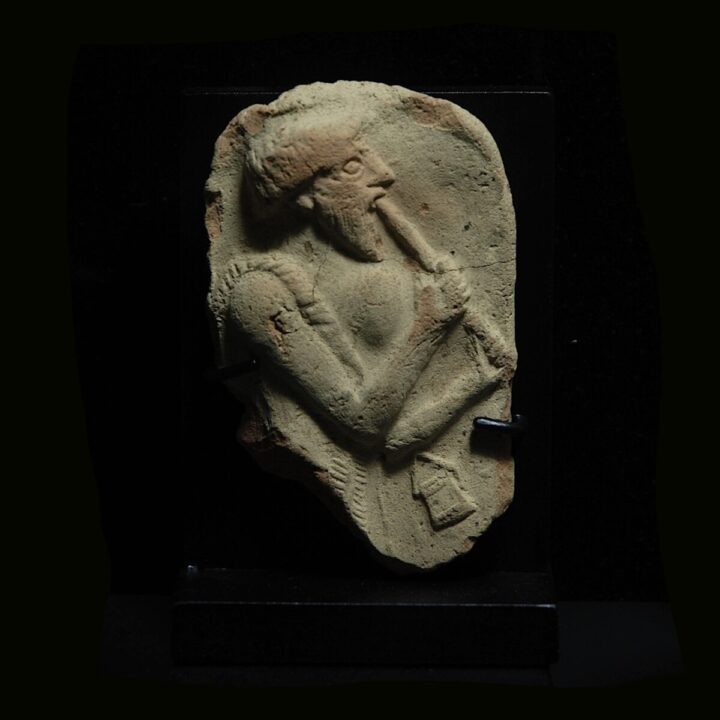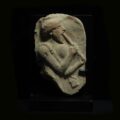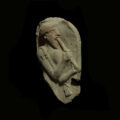Old Babylonian Clay Plaque with a Shepherd Playing the Flute
Culture: Mesopotamia/Old Babylonian
Period: 2000-1800 B.C.
Material: Clay
Dimensions: 8.1 cm high
Price: Sold
Ref: 6535
Provenance: From the collection of the Israeli judge Steve Adler, Jerusalem.
Condition: Unrestored, the left lower part missing.
Description: Rare clay plaque depicting a bearded man with large eyes who plays a flute made of reeds. He is a shepherd. He wears a formfitting cap and has a small bag tied around his shoulders. The flute, a forerunner of the “Shabbaba” that is still widespread in the Arab world today, has been known since the 3rd millennium BC. It was often played during funerals. Shepherds, such as the one on the present votive plaque, also played for their own entertainment and distraction in front of their animals. One of the oldest depictions of a flute player is on a Sumerian shell ornament from Nippur and dates to the period from 2600 to 2500 B.C. Also known are numerous depictions on cylinder seals. However, on clay plaques the depiction is relatively rare. With numerous fingerprints of the artist on the back. Mounted.





